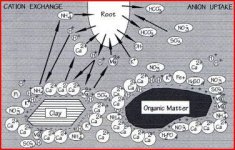Just my 2cents, CC...
first off... awesome thread... consensus on usage of terms is mucho importante`.
secondly... In all my time growing, I have only ever used "flushing my medium" ,as you described it and defined it in your first post, a hand full of times... Usually it was in response to having overfed, and I can't remember the last time I did it, it has been so long.
When I use the term flush am usually using it in terms of flushing the plant... I probably contribute to the misunderstanding by doing so, if people read it as something one does to the medium... In my usage "flushing the plant" simply means allowing the plant to use up it's store of nutrients late in flower...
I don't know what the correct term would be for reducing or eliminating unnecessary nutrient late in flower to allow the plant to metabolize it's stores, that's why I call it "flushing the plant", but I'm open to terminology suggestions...
first off... awesome thread... consensus on usage of terms is mucho importante`.
secondly... In all my time growing, I have only ever used "flushing my medium" ,as you described it and defined it in your first post, a hand full of times... Usually it was in response to having overfed, and I can't remember the last time I did it, it has been so long.
When I use the term flush am usually using it in terms of flushing the plant... I probably contribute to the misunderstanding by doing so, if people read it as something one does to the medium... In my usage "flushing the plant" simply means allowing the plant to use up it's store of nutrients late in flower...
I don't know what the correct term would be for reducing or eliminating unnecessary nutrient late in flower to allow the plant to metabolize it's stores, that's why I call it "flushing the plant", but I'm open to terminology suggestions...





 rndzl
rndzl
